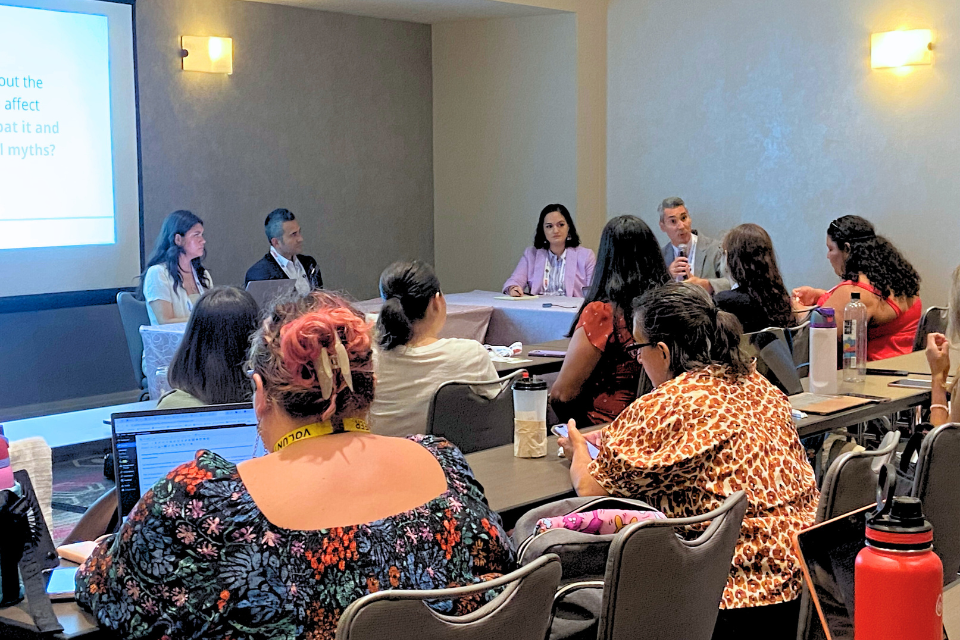By Ana Arellano
CTLatinoNews.com
While, approximately half a million Connecticut adult residents lack basic skills in reading, writing and computation, many are not aware there are free classes available to them. So if you know someone who needs help, point them in the direction of their local school districts, which don’t educate just people 18 and under. Adults in need of basic educational opportunities find out about the programs best by word of mouth.
John Fabrizi, director of Adult Education in Bridgeport, notes that one of the best ways to attract students is “when people refer folks to us. We have very good local contacts.” By the first day of fall registration for GED and ESOL classes in Bridgeport, hundreds had already registered, from all ethnic backgrounds.
The city is 40 percent Latino, yet the makeup of this population is changing. “We are experiencing a robust growth in individuals of Brazilian origin, who speak Portuguese,” says Fabrizi. “We try to have ESL teachers who know some Portuguese teach the Brazilian students, just like we try to have teachers who know some Spanish for the Spanish-speaking students.” All teachers are certified and have specific training to teach in their particular area.
The mission of the state’s Department of Adult Education is to ensure all adults have access to classes, free of charge, which will give them these essential skills. Adult Education classes are offered through every town, city, or region in the stateboth daytime and evening. Some are offered online. Certified instructors teach courses and mentors are assigned for online learners.
The most important classes are the Generalized Education Development (GED) for receiving a high school level education; Adult Basic Education (ABE) for basic literacy; and English for Speakers of Other Languages (ESOL).
Connecticut “has approximately 28,000 enrolled in adult education, 13,000 who self-identify as Latinos,” according to Jim Polites, Director of Communications for the Connecticut Department of Education. The classes are advertised in traditional ways, “brochures, newspaper, radio, and television commercials, including Spanish language media outlets,” says Polites. He adds that each school district designs the best publicity methods for their own region, also placing information in “common community areas such as libraries, storefronts, and churches.”
Fabrizi is keenly aware of the importance of the GED to potential employers, regardless of whether they require a high school diploma. “Passing the GED test makes you more attractive. This is a way for them to find out what you have as basic education.”
Once a student passes the test, the state issues the individual a high school diploma. A job applicant now has proof that he or she has proficiency in the core knowledge and skills normally taught in high school. The test can be taken in either English or Spanish. The GED diploma does not indicate the language in which the test was taken.
For those who simply didn’t finish high school credits, says Fabrizi, “Bridgeport offers a program where students can take courses exactly where they left off in high school and earn a Bridgeport High School Diploma. This would include electives as well as the core subjects.” Two hundred students graduated last year. The age group of most students was between 20 and 30 years old,” says Fabrizi. “but we graduated one 63 year old.”
Citizenship classes are held in Bridgeport and throughout the state, also for free. These prepare students for the entire application process, including the citizenship test.
Unfortunately, Bridgeport does not have the resources to prepare students with more specific job skills, although Fabrizi stresses the importance of the language, knowledge and analytical training already offered by his department. These all make a difference in the job market.
Since Bridgeport is not unique, if you or someone you know wants to find out about or enroll in one of these courses or take the GED test, you can contact your local school system. Many school systems are still accepting late registrations.
Photo (c) Ana Arellano
canadian pharmacy Amitriptyline



